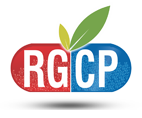PHYTOPHARMACOLOGY OF TURMERIC
Abstract
Turmeric is an herbaceous evergreen plant in the
Zingiberaceae (ginger) family. Turmeric (
Curcumalonga) is extensively
used as a spice, food preservative and colouring material in India, China and
South
East Asia. Turmeric powder is best known as one of the main
ingredients used to make the curry spice; it
also gives ballpark mustard
its bright yellow colour. Apart from its culinary uses, turmeric has been used
widely in the traditional medicine all over the world. Curcumin
(diferuloylmethane), the main yellow
bioactive component of turmeric has
been shown to have a wide spectrum of biological actions. These
include
its antiinflammatory, antioxidant, anticarcinogenic, antimutagenic,
anticoagulant, antifertility,
antidiabetic, antibacterial, antifungal,
antiprotozoal, antiviral, antifibrotic, antivenom, antiulcer, hypotensive and
hypocholesteremic activities.
Introduction
Turmeric is an herbaceous evergreen plant in the
Zingiberaceae (ginger) family. It is cultivated
extensively in Asia mostly in India and China.
Probably originated from India, turmeric has
been used in India for at least 2500 years. Turmeric
plant is distributed throughout tropic and
subtropical region of the world.
Turmeric is a
sterile plant and does not produce any seeds. The plant grows up to 3-5 ft tall
and dull yellow flowers. The rhizome is an underground
stem that is thick and fleshy ringed
with the bases of old leaves is part of turmeric which
posses a potential medicinal property.
Rhizomes are boiled and then dried and ground to make
the distinctive bright yellow spice. Turmeric powder has a peppery bitter
flavour and a mild fragrance slightly reminiscent of
orange and ginger.
Phytoconstituents of turmeric
Turmeric
contains 69.4% carbohydrates, 6.3% protein, 5.1% fat, 3.5% minerals, and 13.1%.
moisture. The essential oil (5.8%) obtained by steam distillation possesses
Sesquiterpenes (53%), zingiberene (25%),
a-phellandrene (1%), sabinene
(0.6%), cineol (1%), and borneol (0.5%). Curcumin (3–4%) is responsible for the
yellow colour, and comprises curcumin I (94%), curcumin II (6%) and curcumin
III (0.3%). Presence of tumerone a, tumerone b, curzerenone, curdione, mono-
and di-demethoxycurcumin have been reported in the rhizomes
Phytopharmacology
of turmeric
Turmeric
has several therapeutic and pharmacologic activities. The following is the most
important phytopharmacology and therapeutic properties of turmeric.
1.
Antioxidant activity
Curcumin
has been shown be a powerful scavenger of oxygen free radicals. Its antioxidant
activity is comparable to vitamins C and E (4). It can protect lipids or
hemoglobin from oxidation. It can significantly inhibit the generation of
reactive oxygen species (ROS) such as H2O2, superoxide anions and nitrite radical
generation by activated macrophages.
2.
Cardiovascular and anti-diabetic effects
Turmeric
exerts cardio-protective effects mainly by antioxidant activity, lowering lipid
peroxidation, anti-diabetic activity and inhibiting platelet aggregation.
Both turmeric decreases blood glucose
level in diabetic rats. Turmeric also decreases complications in diabetes
mellitus.
3.
Inflammatory and edematic disorders
Curcumin
is a potent anti-inflammatory with specific lipoxygenase- and COX-2- inhibiting
properties.
In vitro, and
in vivo studies have demonstrated its
effects at decreasing both acute and chronic inflammation.
Conclusion
Turmeric
is the unique source of various types of chemical compounds, which are
responsible for a variety of activities.
Ketki Shori
Assistant
Professor
College Address
College At:- Near Sultanpur Bird Sanctuary,
Farrukhnagar, Distt.- Gurgaon, Haryana
Phone:- 9818511778
Email:- rgcpcollege@gmail.com
Head Office
A1/11, Prashant Vihar Rohini,
Near Pitampura Metro Station,Opposite Power House
New Delhi, India-110085



